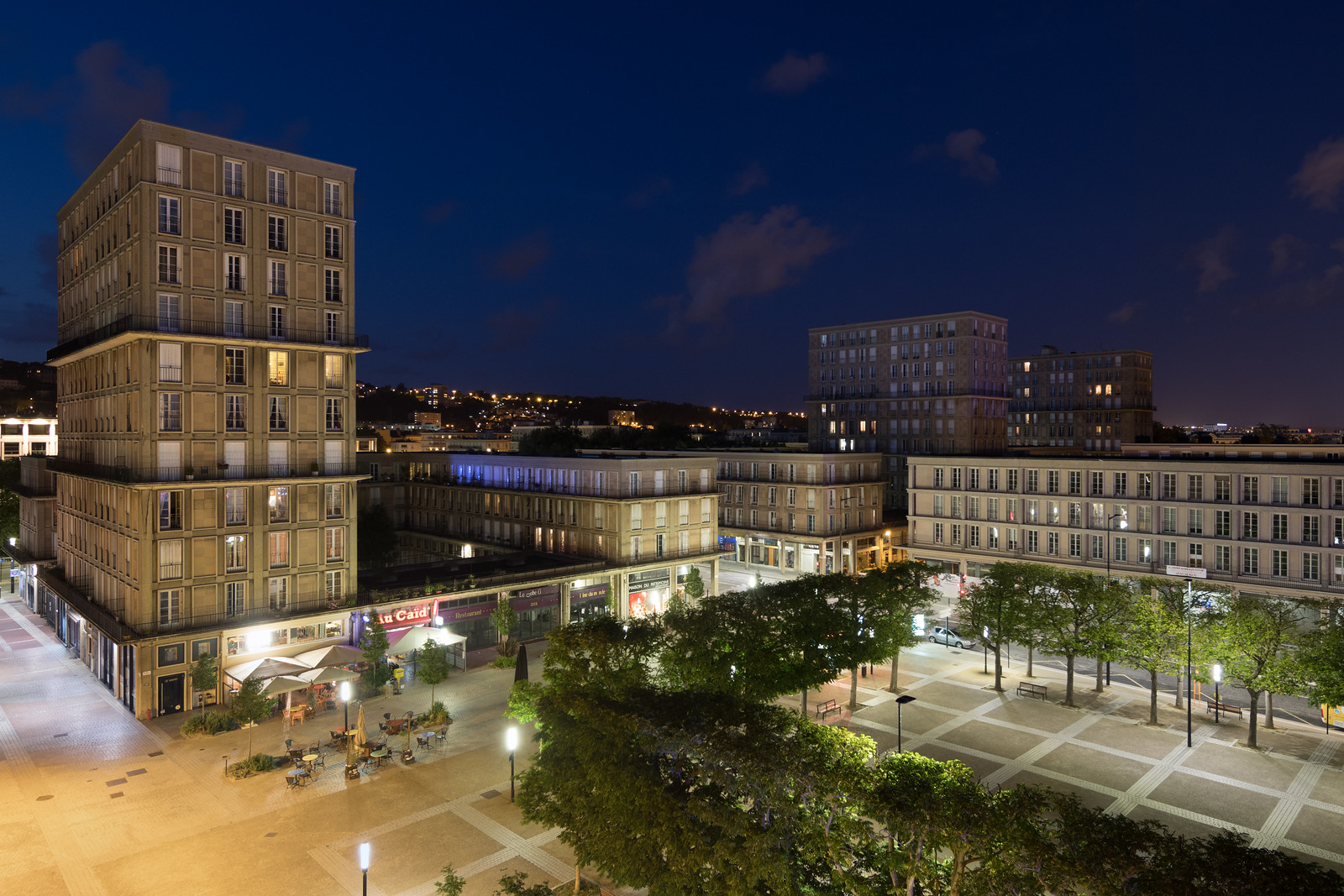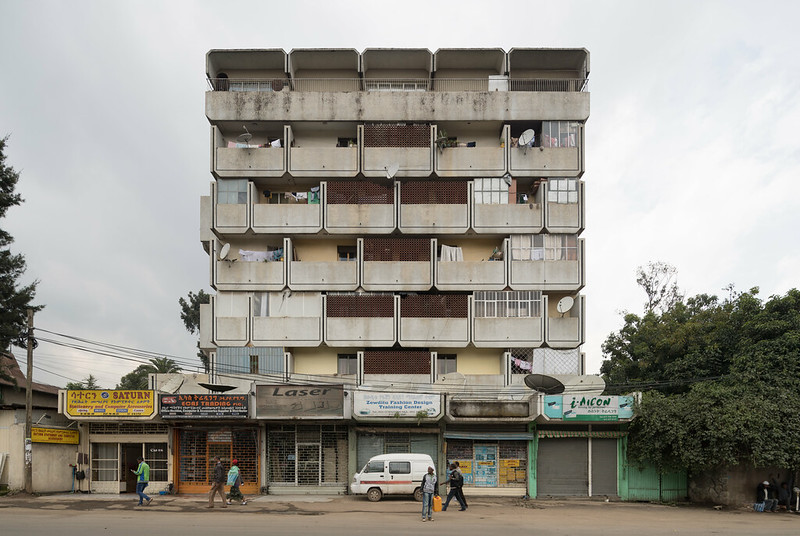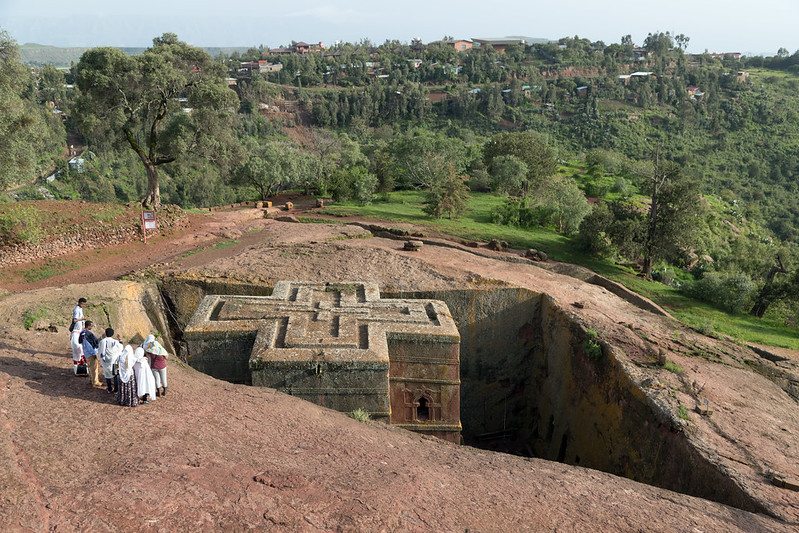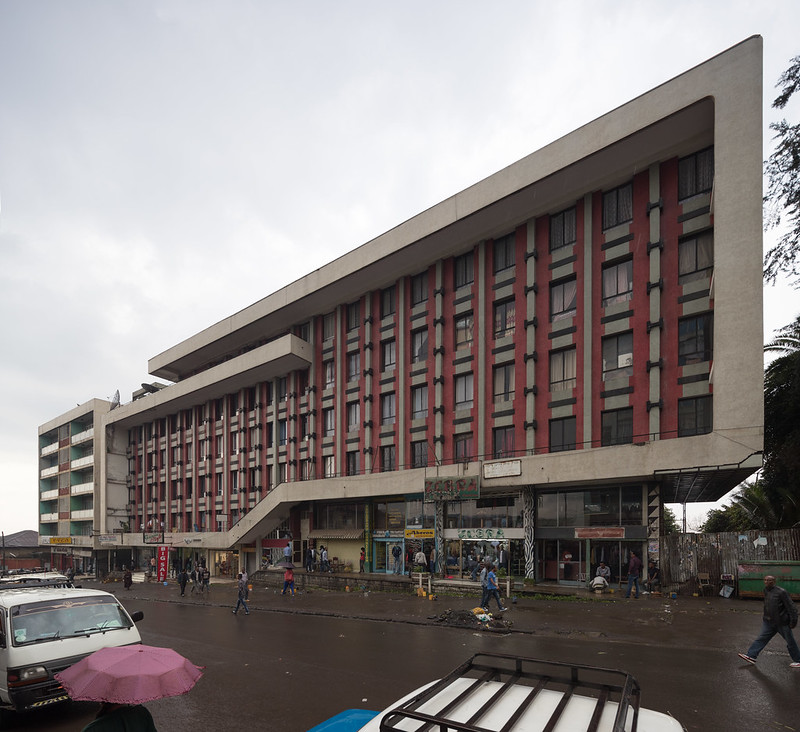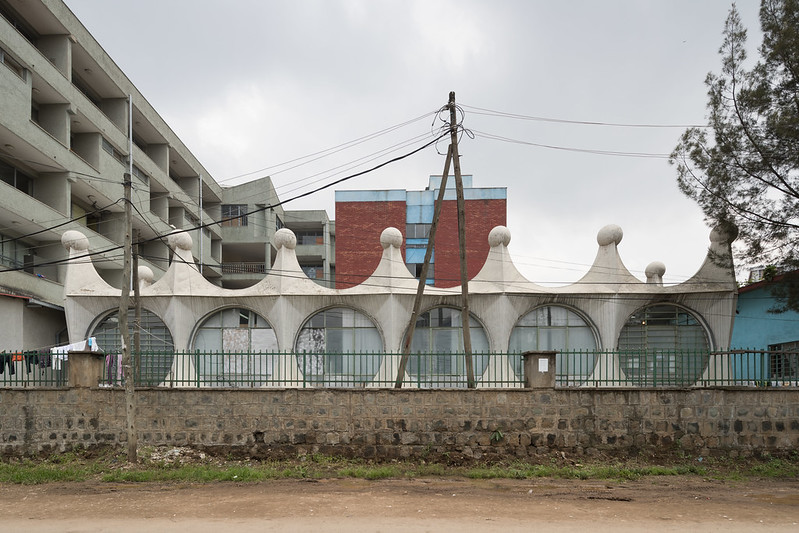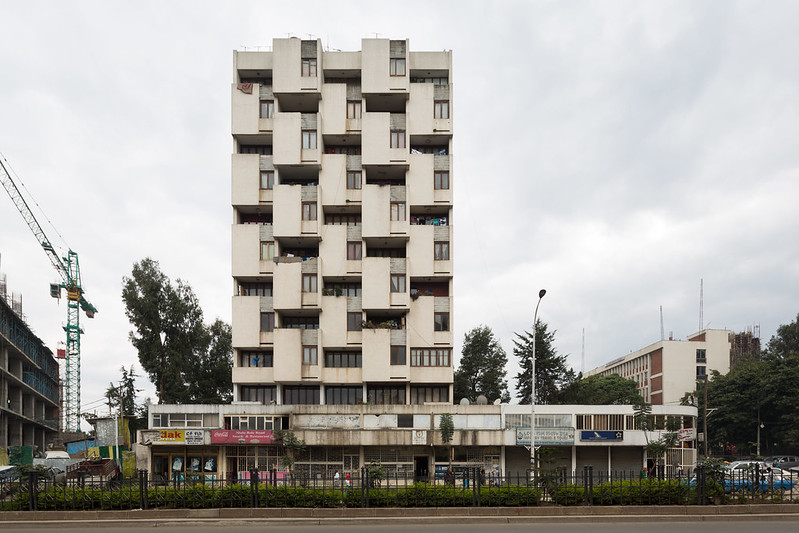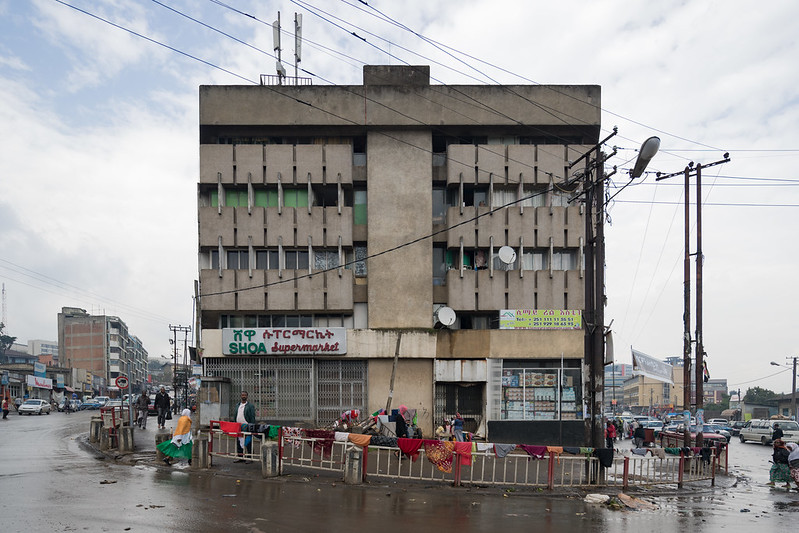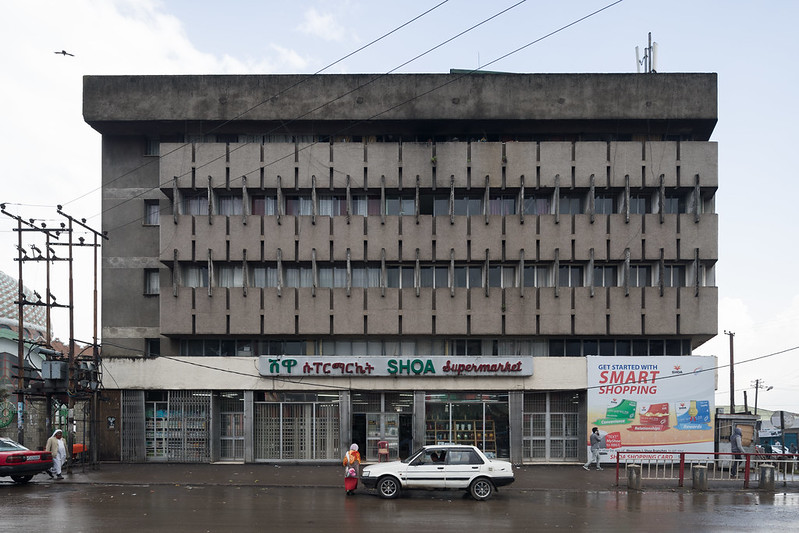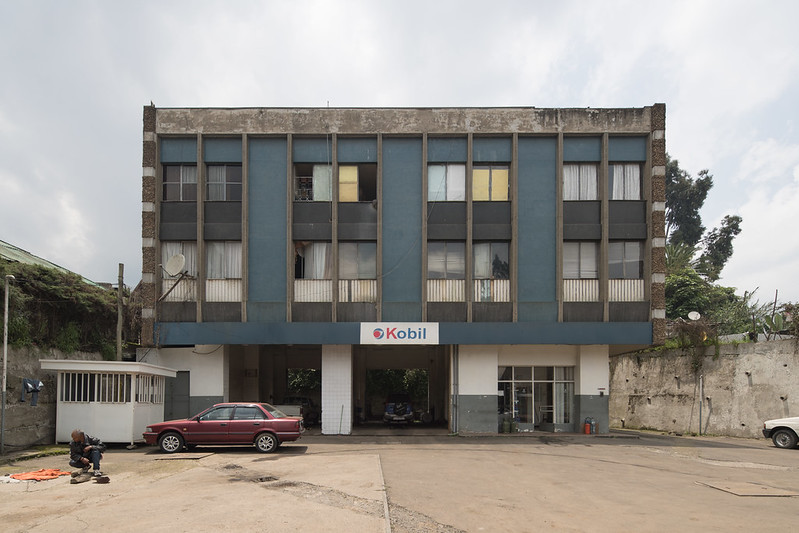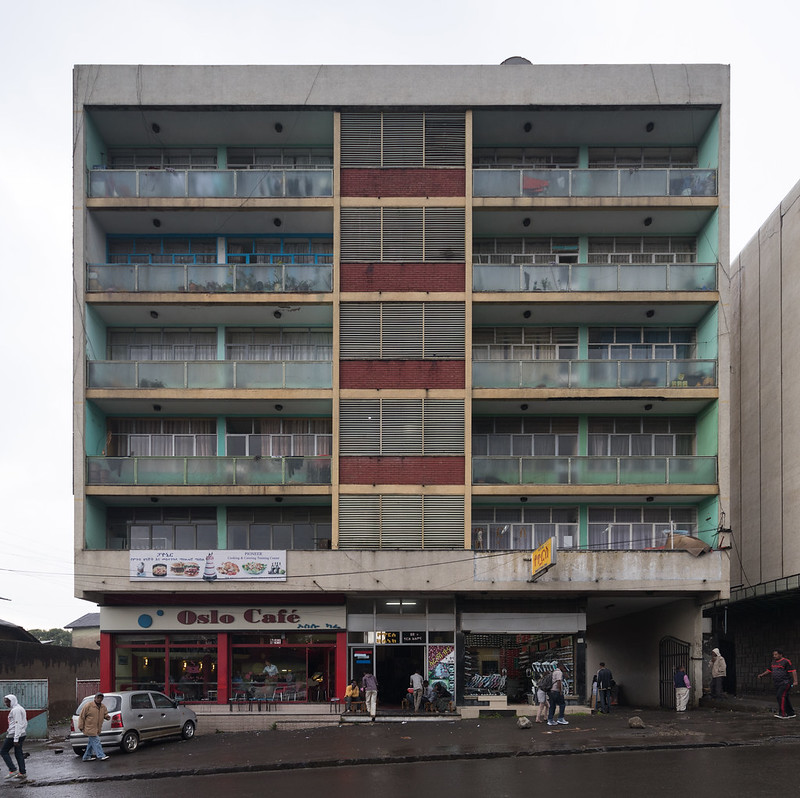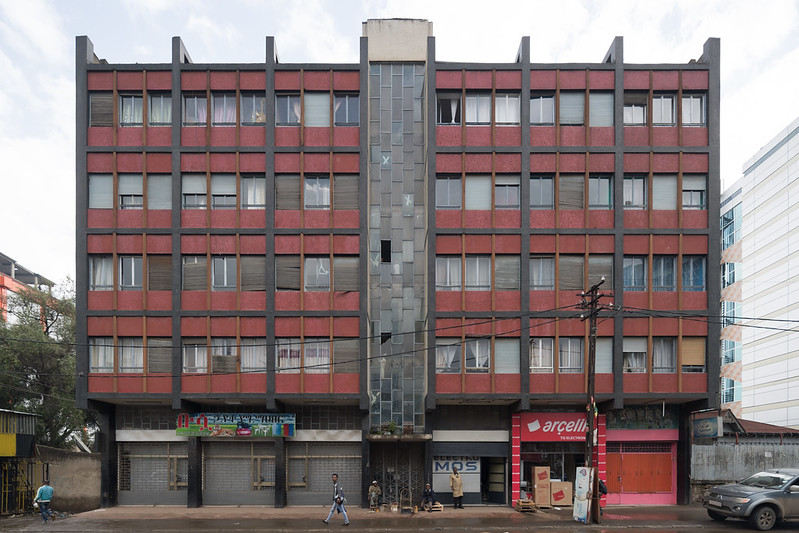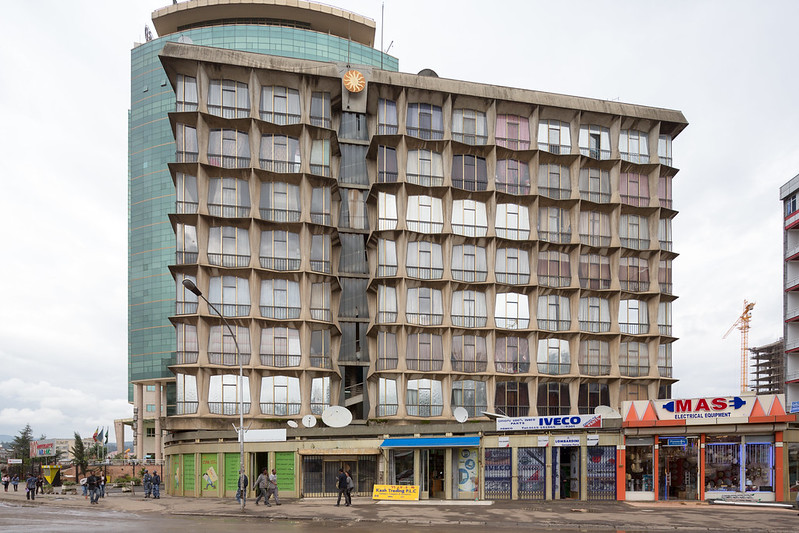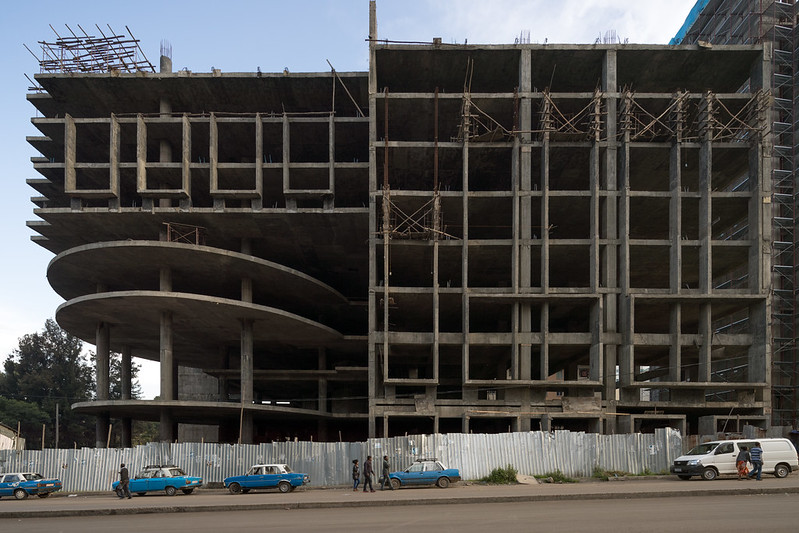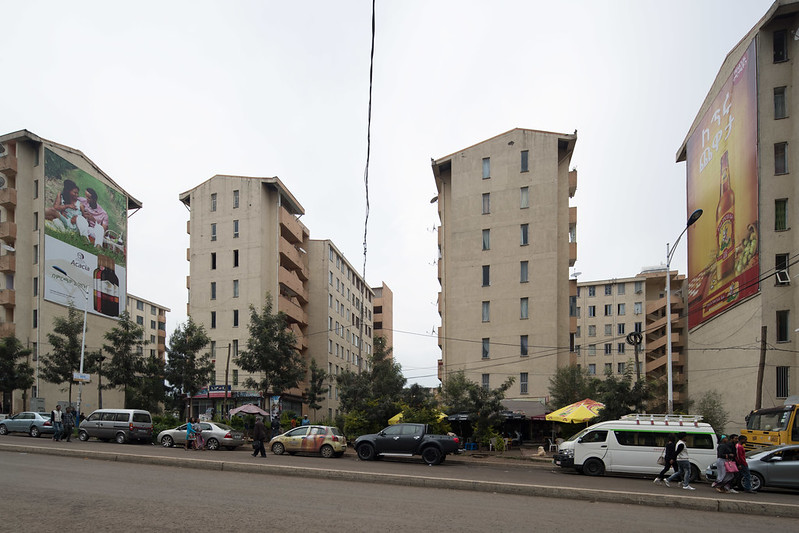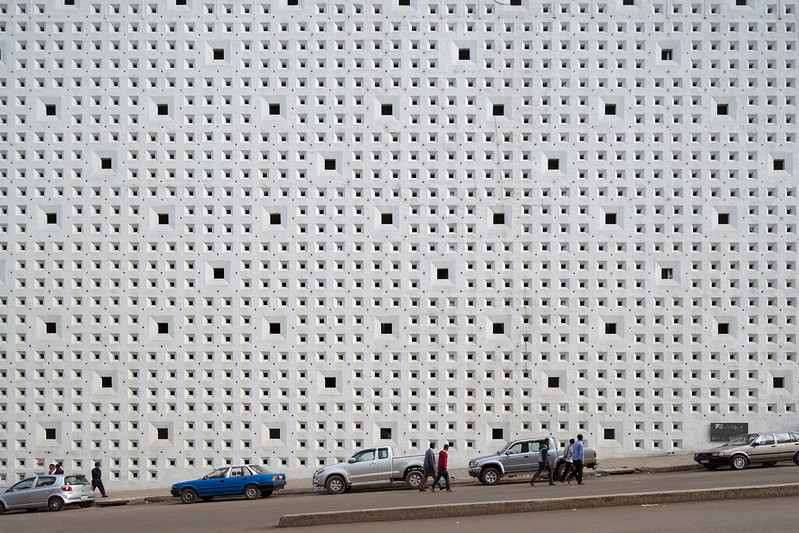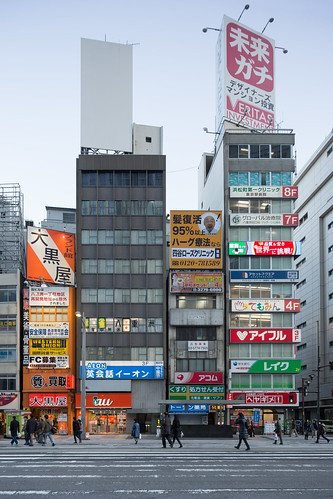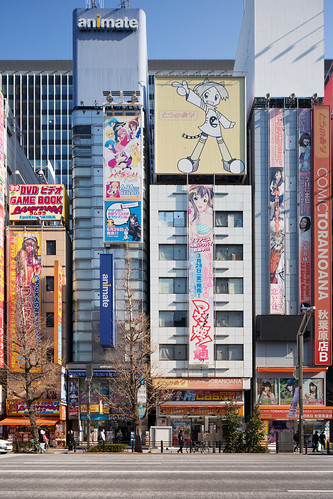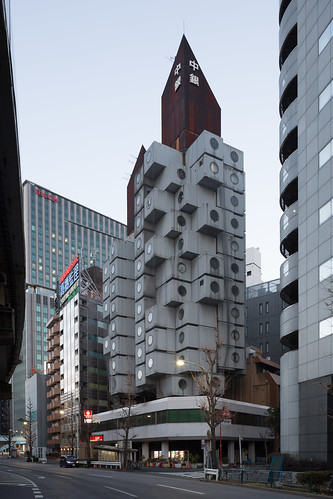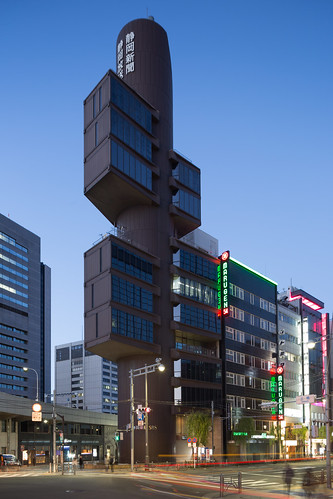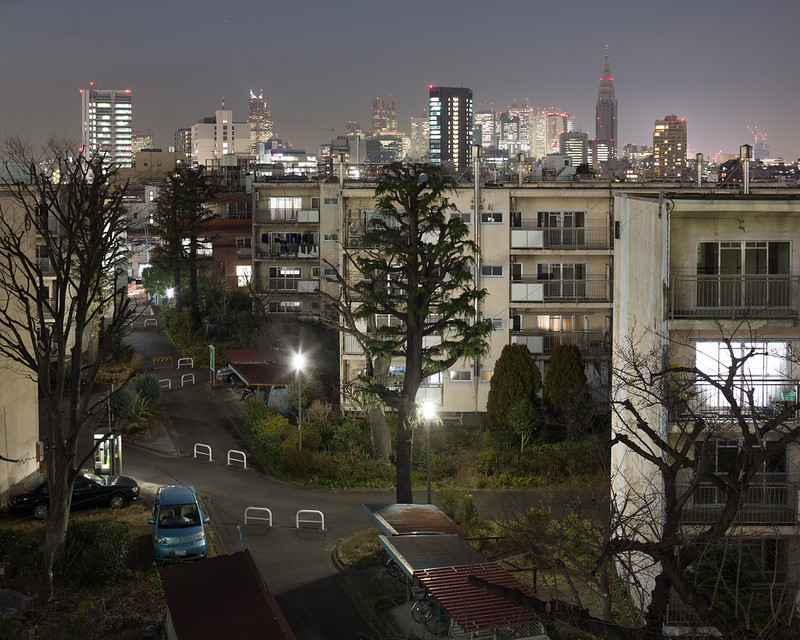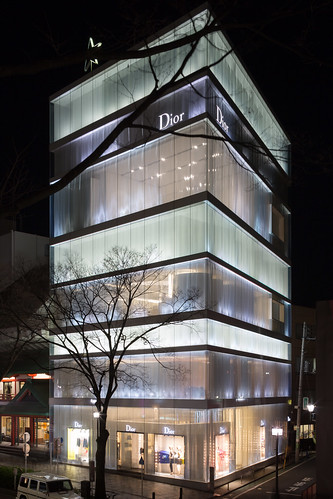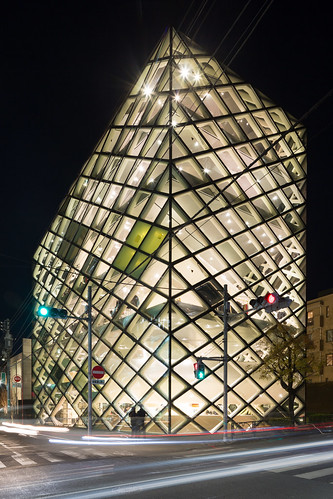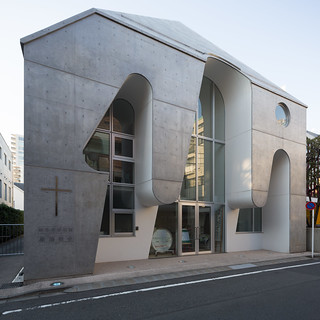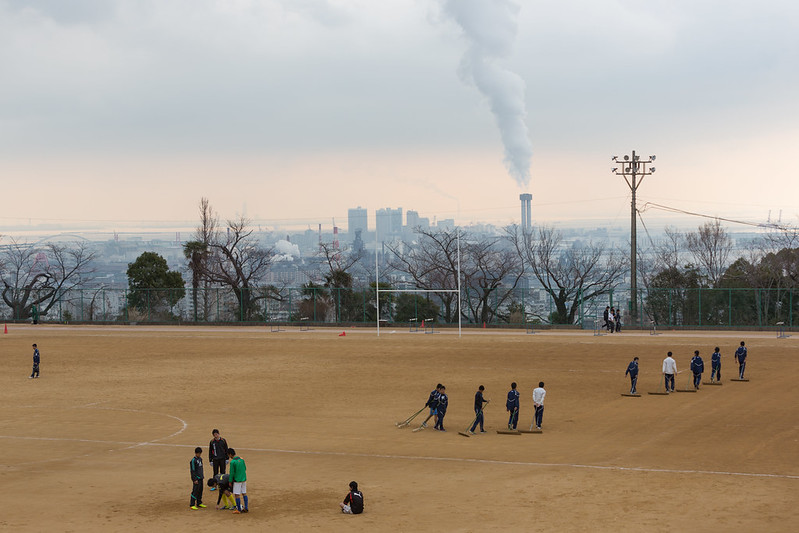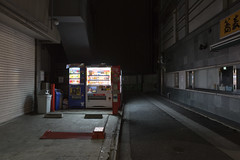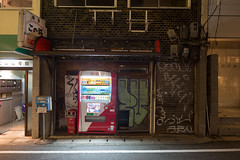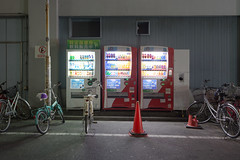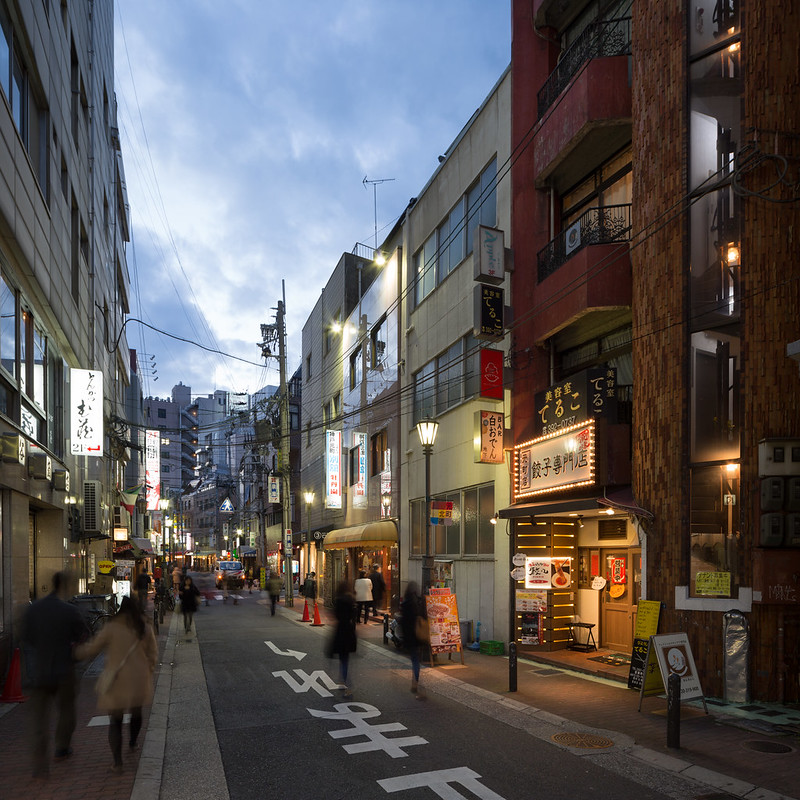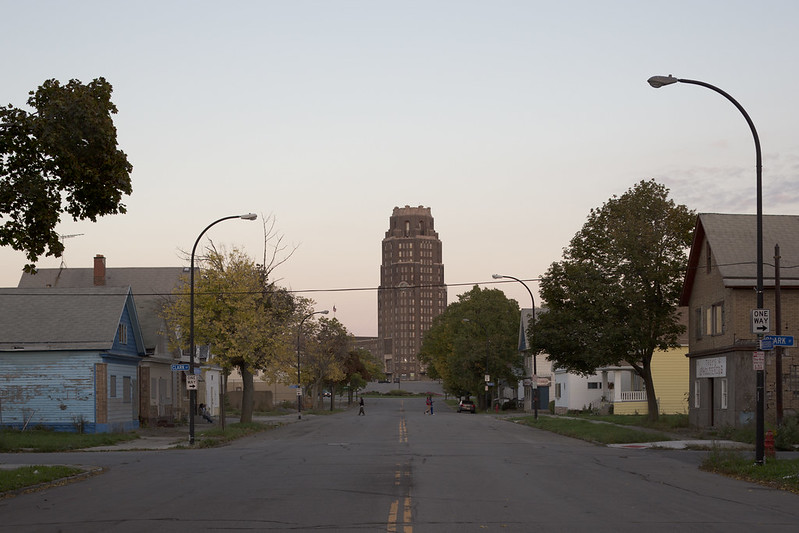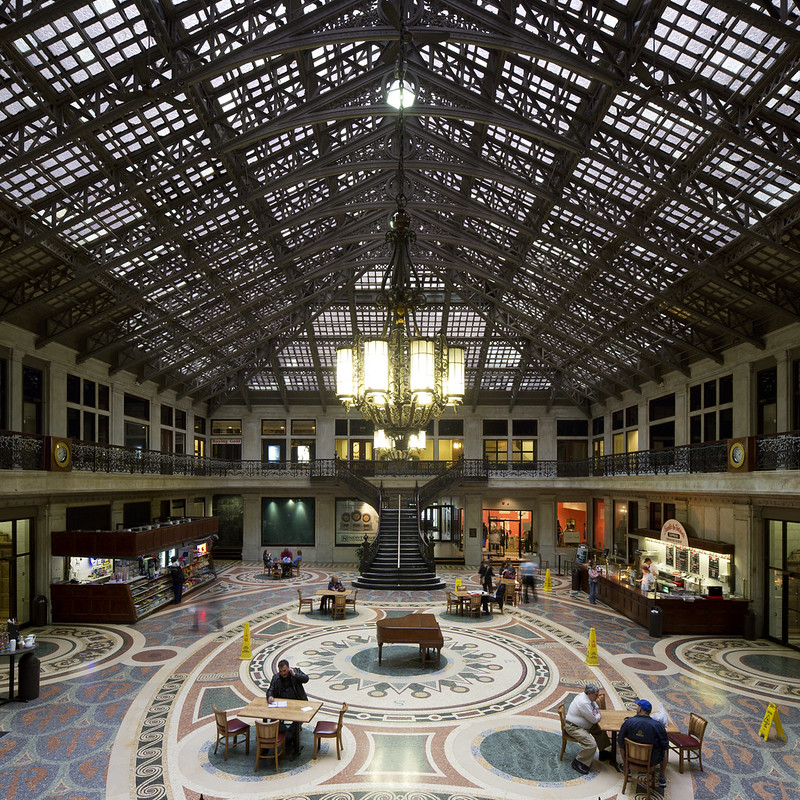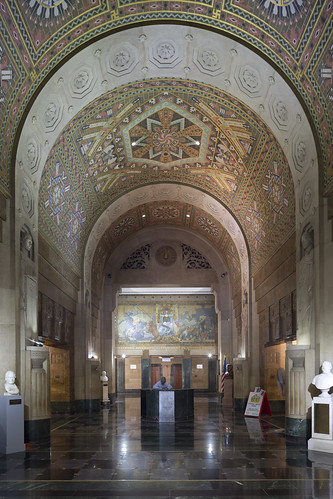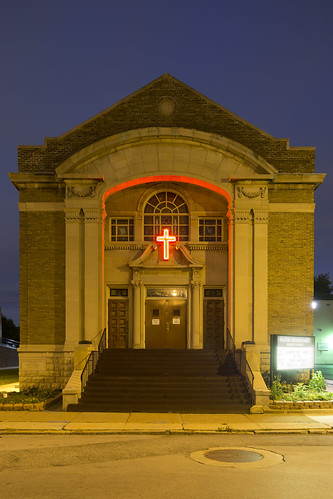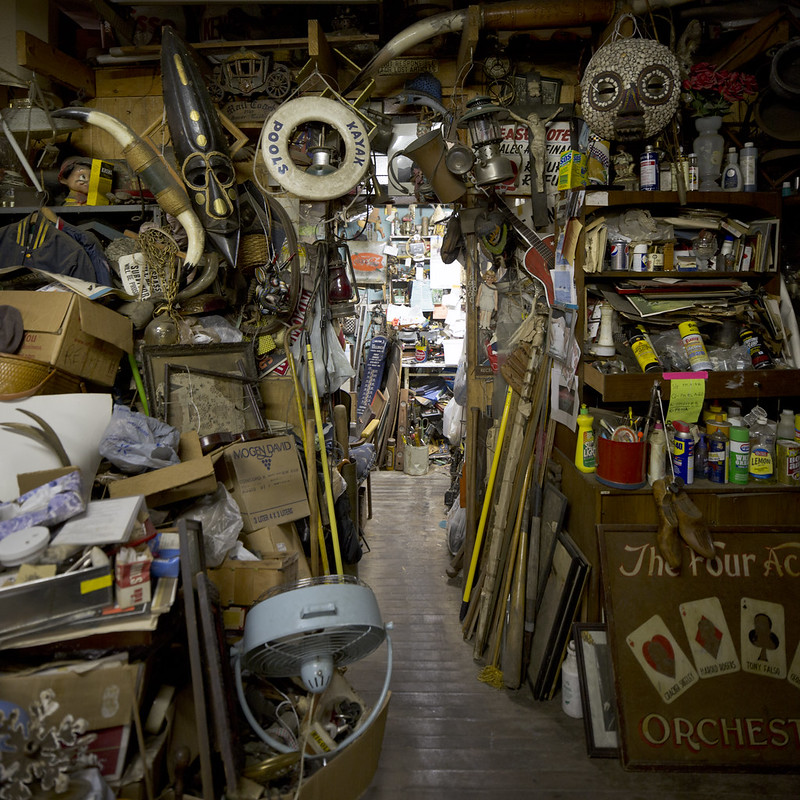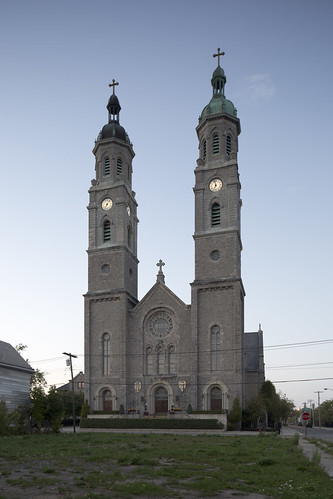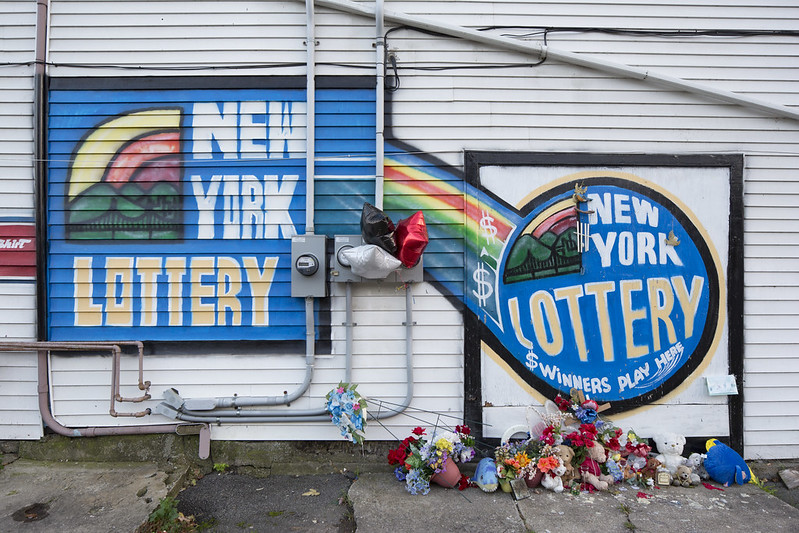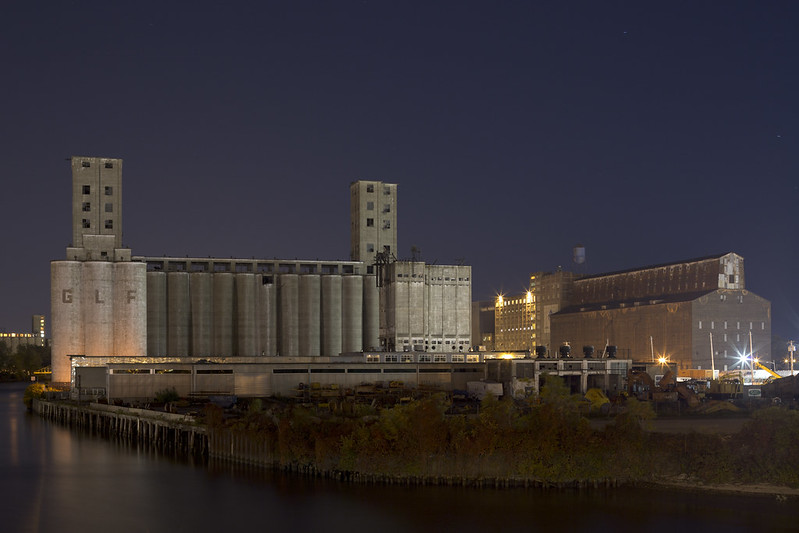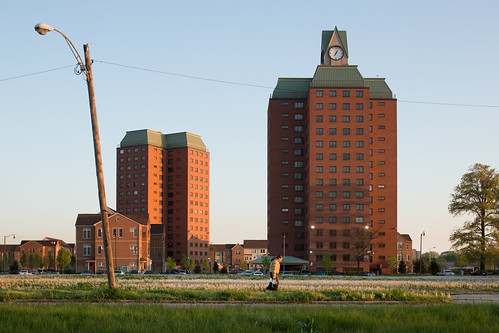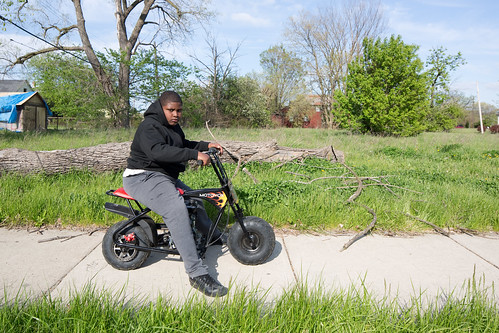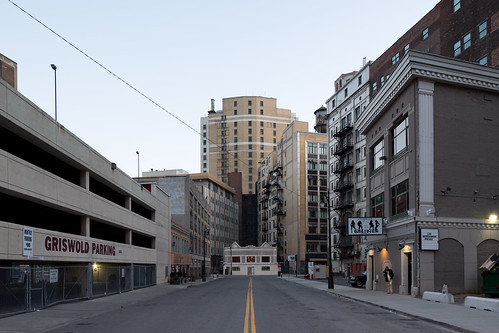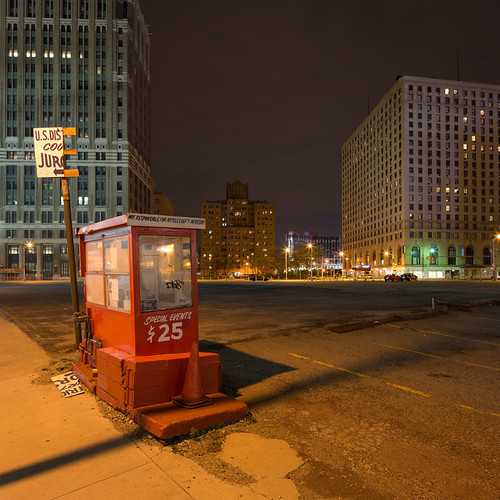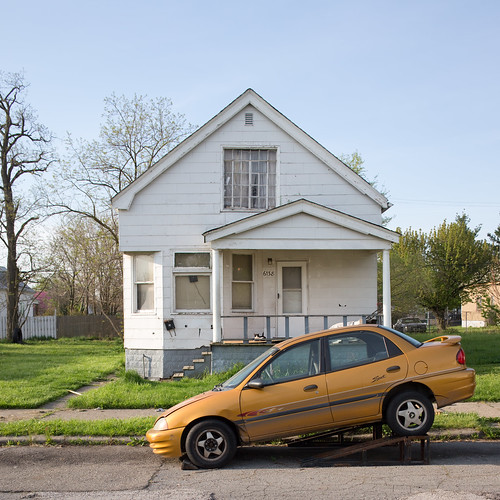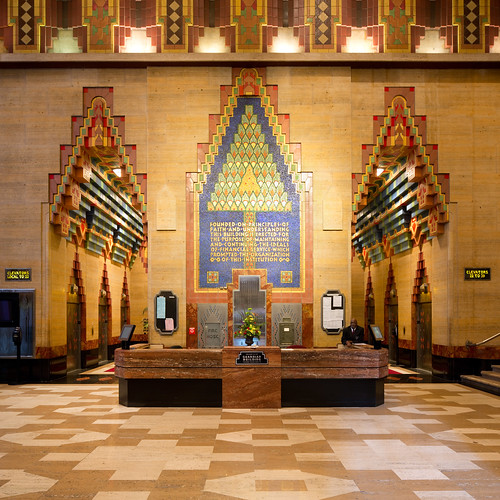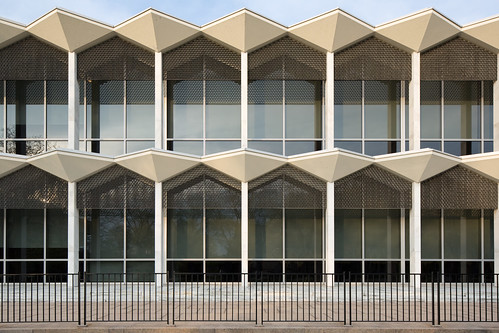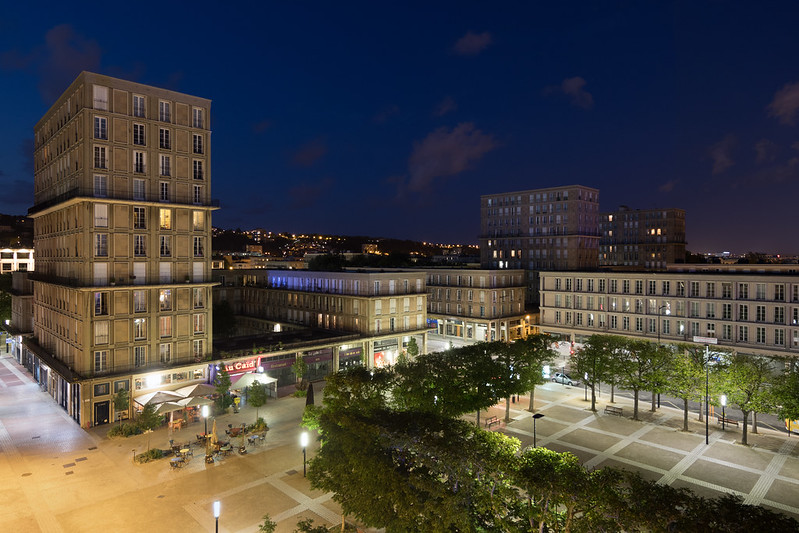
Mixed-use buildings with residential towers overlooking Place Auguste Perret
A modernist city designed by Le Corbusier’s mentor, Auguste Perret, sits on the coast of Normandy. Le Havre’s concrete origins date to September 1944, when the British bombed the German-occupied city’s coastal plain. The assault almost completely destroyed the district and killed more than 5,000 people.
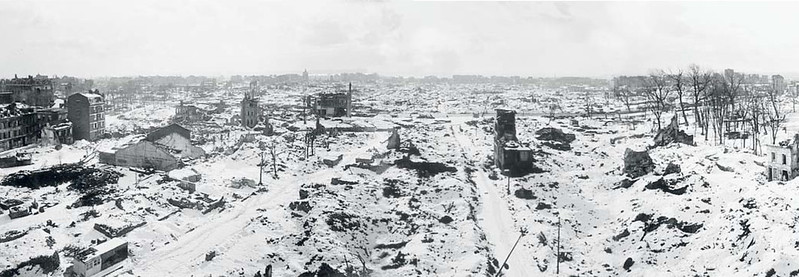
The commercial core of Le Havre in January 1945
(Image source: stitched panorama from the UNESCO Nomination, “Le Havre, the city rebuilt by Auguste Perret.”)
Rather than abandon the port city, the French government began planning for its reconstruction after liberation. From 1945 until 1964, the city’s core was totally reworked by a team assembled by Perret, yielding the singular city seen today. As with many modernist and brutalist developments, Le Havre fell out of favor towards the end of the 20th century before finding admirers in recent years. Perhaps the pinnacle of this recognition is the listing of the urban core as a UNESCO world heritage site in 2005. The designation recognizes the modernist area, with its standouts like Perret’s own Église Saint-Joseph and later structures like Oscar Niemeyer’s spectacular Maison de la Culture.
Now the city celebrates its concrete past and present, but this year it is also commemorating its 500th anniversary with more than a dozen art and architectural works installed as part of “A Summer in Le Havre.”
Earlier this month, I made a two-day visit to the city on behalf of Atout France and used my free time to visit some of the essential buildings of the reconstruction and the anniversary installations. I will publish additional images from the visit later, but these photographs are among my favorites.

Auguste Perret’s Église Saint-Joseph
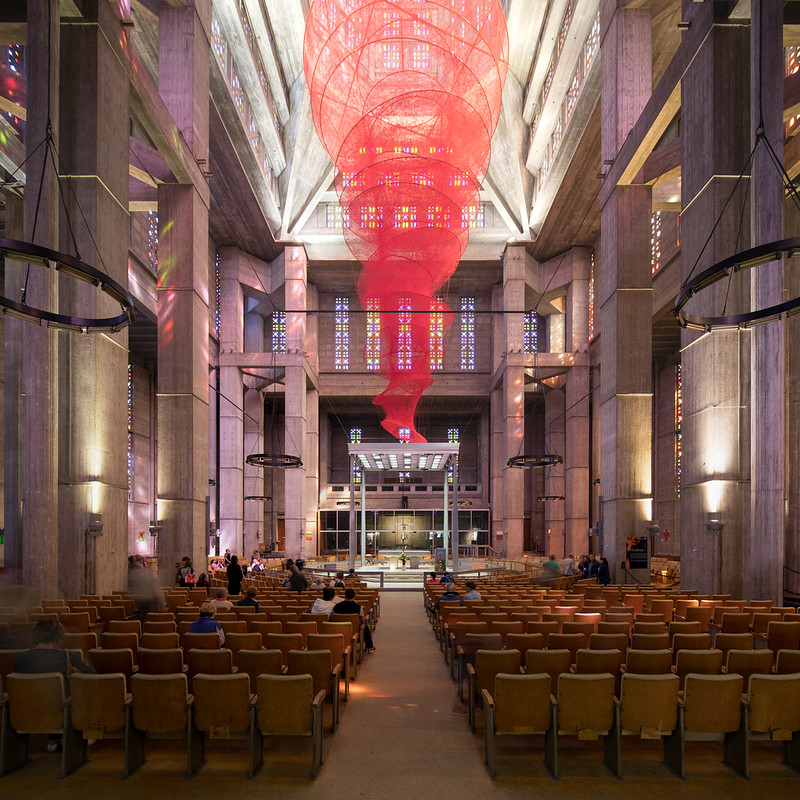
Auguste Perret’s Église Saint-Joseph interior with Chiharu Shiota’s Accumulation of Power

Oscar Niemeyer’s Maison de la Culture du Havre, now called “Le Vulcan”
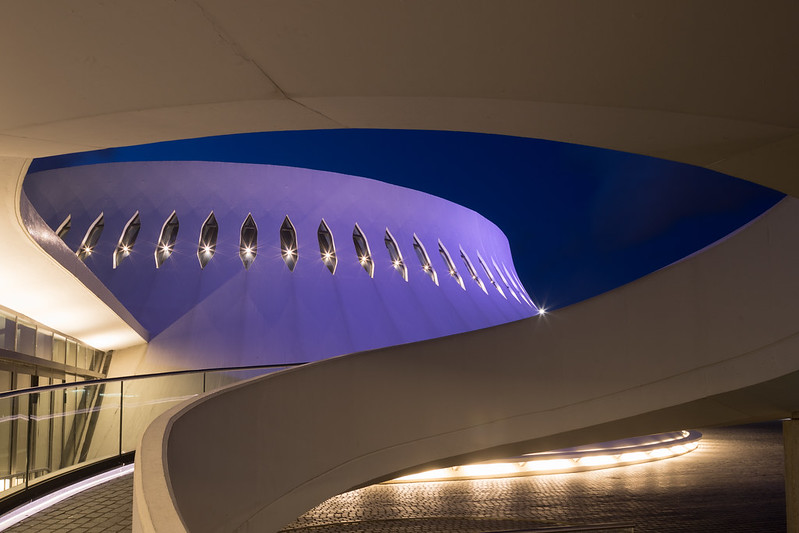
Bibliothèque Oscar Niemeyer, originally the smaller theater from the Maison de la Culture du Havre complex
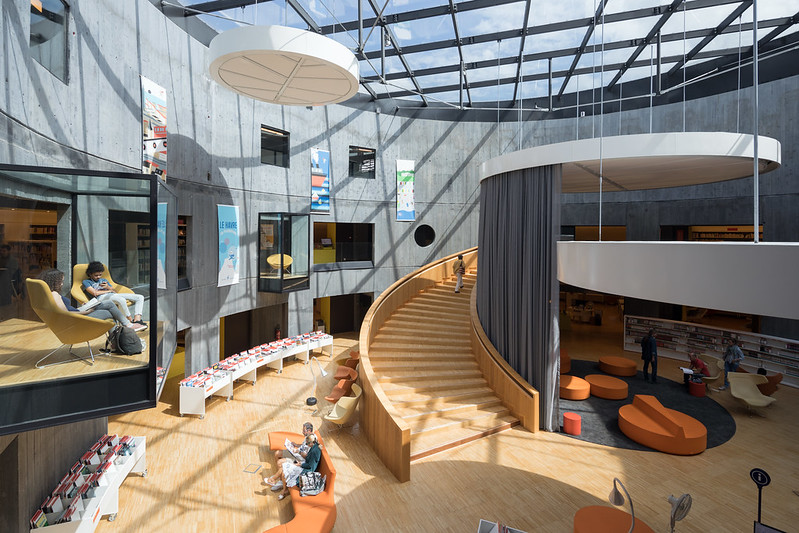
Interior of Bibliothèque Oscar Niemeyer, renovation by Sogno Architecture
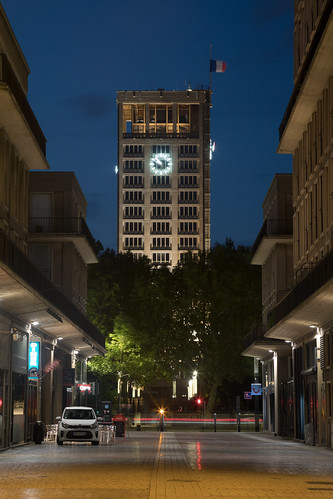

The Le Havre city hall tower and a mixed-use building with the Saturday market in the foreground
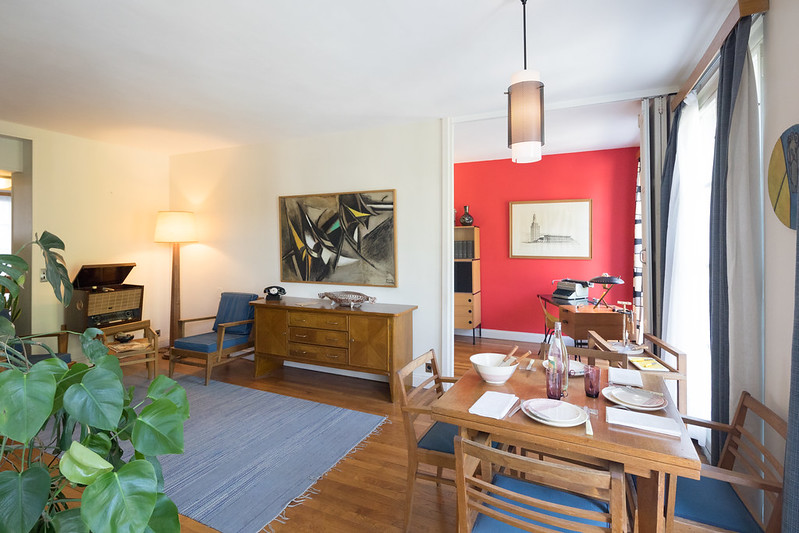
Interior of a residential tower model apartment with period furniture

Looking south down Rue de Paris towards Vincent Ganivet’s Catène de Containers
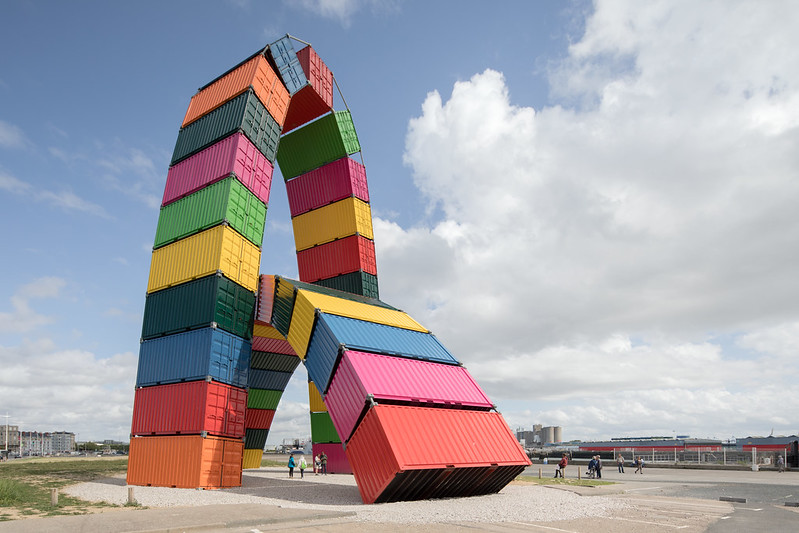
Vincent Ganivet’s Catène de Containers
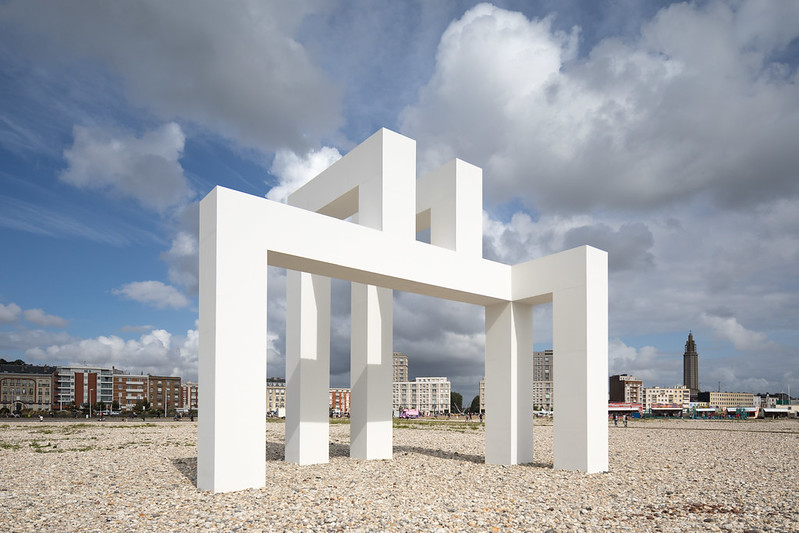
Lang and Baumann’s UP#3, La Porte Océane
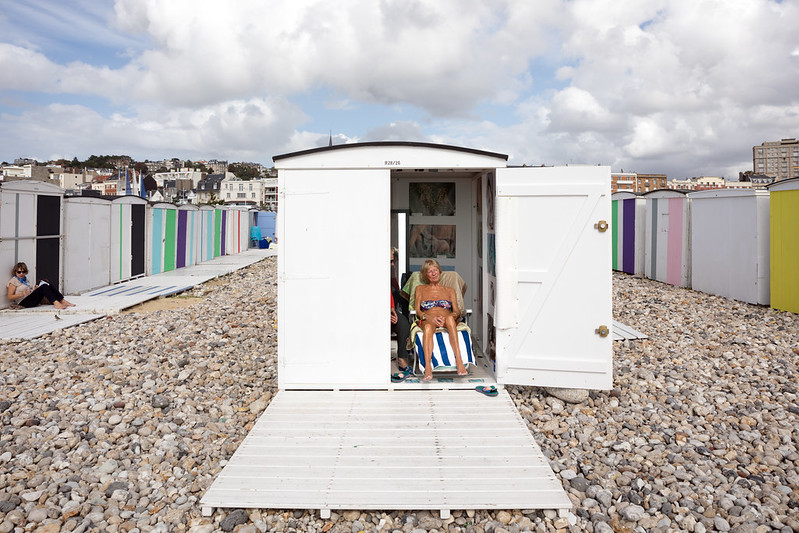
A resident in her cabana with Karel Martens’ Colors on the Beach
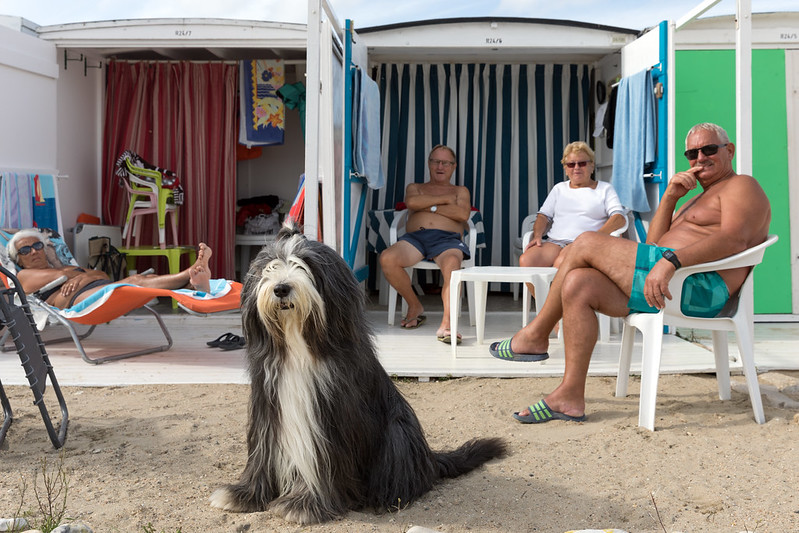
In their cabana with Karel Martens’ Colors on the Beach
Special thanks go to Eric Baudet and Atout France.
